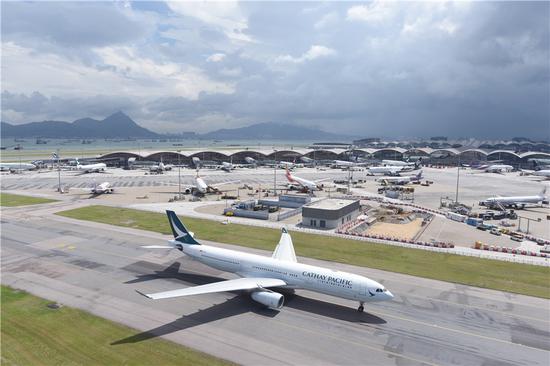China's outbound travel market will maintain double-digit growth this year, despite possible slowed growth in the second half of the year due to recent exchange rate fluctuations, according to a report released by China Tourism Academy and online travel agency Ctrip, thepaper.cn reported.
Tourists from more than 200 Chinese cities arrived in more than 130 countries and 1,500 cities in the world in the first half of this year, reservation data from Ctrip's outbound tourism products showed.
"New" first-tier cities have contributed the largest number of new outbound tourists for the market, and their consumption capacity has been comparable to that of first-tier cities, the report said.
The number of outbound tourists from Xi'an, Guiyang and Nanchang have experienced the most year-on-year growth in the first half of this year, while outbound tourists from Changchun and Wenzhou surpassed those from Beijing and Shanghai in spending per capita, at 6,946 yuan ($1,011) and 6,704 yuan respectively.
In the first half of this year, the total number of Chinese outbound tourists reached 71.31 million, increased by 15 percent year-on-year from 62.03 million in the same period last year, as the number of outbound travel destination countries has increased under the Belt and Road Initiative, a report by the data center of the Ministry of Culture and Tourism said.
Dai Bin, dean at China Tourism Academy, said the growth of the outbound tourism market is due to several factors: first, both Chinese people's willingness to travel and ability to pay have increased; second, major outbound travel destinations have strengthened market promotion for Chinese tourists and introduced more convenient visa and tax-free policies; third, innovations on island, parent-child, customized and leisure tourism products have attracted more people.
Thailand was the most popular destination for Chinese outbound tourists, while Russia rose in the ranking to become the eighth most popular destination, according to the report.
The age composition of outbound tourists also presents a new trend. As the post-80s generation is still the backbone of outbound travel to account for 31 percent of outbound tourists in the first half of this year, the post-90s generation, having begun to surpass the post-70s generation, accounted for 18 percent, 2 percentage points higher than the post-70s generation.




















































